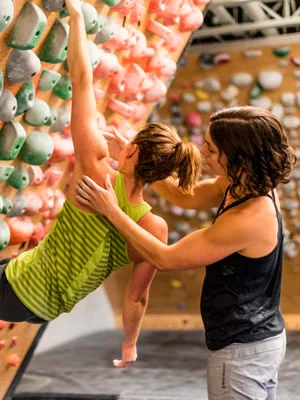Do you spend time self massaging to recover from activity or injury? How long should you self massage? What should you focus on when you are massaging injured muscles? What should you feel after you self massage? What should you feel after you self massage?
Read MoreIt's hard to find a climber who hasn't experienced elbow pain at some point. You’ve likely lowered from many a route rubbing your elbow to ease a nagging ache in your arm. Such was the case with BD Ambassador Brittany Griffith … that is, until she met Esther Smith. In the second installment of their Hang Right series, Physical Therapists Esther Smith and Katey Blumenthal explain the cause of elbow pain and tell us what we can do about it.
The bottom line is that if you injure your pulley, just get something on there to offload the healing tissue. By offloading the tissue you can help reduce stress to the healing pulley, and at the very least it will help you avoid tendinopathies from developing. From this point forward, you now know why H-tape is the method of choice thanks to the diligent research from Dr. Schöffl and her team, and all of the collaborators that helped shed light on the topic.
Read MoreIn Part 2, I’d like to shed some light on pulley injury specifics, including the injury grading system and what tissues/structures are affected, and then I will walk you through what conservative management of a pulley injury looks like. The good news for climbers today is that climbing-specific surgeons, like Dr. Volker Schöffl, now view surgery as a last resort for single pulley injuries, and only recommend it for multiple pulley ruptures. I will finish with some injury prevention strategies to keep you all climbing strong and healthy.
Read MoreIf you’re a climber, chances are you have either had a finger injury, or at least you know someone who has had one. According to the research literature, namely Doctors Volker Schöffl1, Alex Folkl, and Erik Gerdes, finger injuries are the number one culprit, with A2 pulley injuries being the most common.
Read MoreIt’s a myth of climbing beta that we’ve all heard: hanging on your bones instead of engaging muscles conserves energy while resting on a climb. The fallacy of this myth is that the human body is not manufactured to function like a bag of rocks. Hanging loose puts undue stress, wear, and tear on the soft tissues that function to connect the bones in our shoulders, leading to a host of insidious injuries. The wild thing is that climbers are hanging loose even when energy conservation isn’t a concern, such as on the hangboard or pull-up bar.
Read MoreIt seems almost EVERYONE is drinking or incorporating bone broth into their diet now. In the last few years this ancient superfood has returned with a force in the health, athletic, and culinary worlds.
Read MoreFor those of us who train, whether a weekend warrior or high level competitive athlete, if we want to maximize both our training gains and performance, magnesium levels are key.
Read MoreIs inflammation getting you down?
Following injury, whether from a specific traumatic event or as a result of accumulative, repetitive stress, our body responds by initiating an inflammatory cascade of events targeting the injured tissue. This inflammatory response is carried out by a predictable series of events intended to clean up cellular debris, repair the insulted tissue, and allow return to normal function over the course of weeks to months.
Read MoreIn my nutritional training course we discussed the roles of fats in the body. One of the most important concepts to grasp is that our human machine is meant to burn fat as our primary fuel source for sustained energy.
Read More









